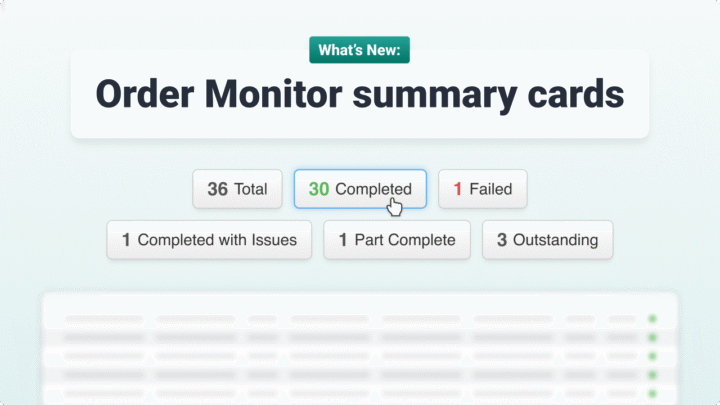What is supply chain management?
Supply chain management refers to the planning and management involved in producing, shipping and selling products and/or services to the end-user. This may include a network of organisations, from manufacturers and producers, to suppliers and shipping companies.
What is logistics management?
Logistics management refers to a part of the overall supply chain: moving and storing goods between parts of the wider supply chain network. Delivery logistics specifically refers to the ‘final mile’ of a product journey to the end consumer. We defined delivery logistics here as:
“the planning, organisation and management of delivering goods to businesses or consumers.”
For many businesses, the simplest, cheapest and least time-consuming way to deliver goods is to outsource to LSPs (logistics service providers) or 3PLs (third-party logistics providers).
Many others though, value the control and flexibility that comes from managing their own logistics operations. For businesses delivering large and bulky items (like furniture), goods with a long lead-time (like bespoke items), goods that require specialist fitting or installation (like domestic electronics), or controlled substances (like pharmaceuticals), managing logistics in-house may be the most cost-effective and practical option.
So, what’s the difference between in-house logistics and supply chain management or outsourced services?
In-house logistics and supply chain management
Organisations that control their own logistics operations likely have their own warehouses, drivers and fleet of vehicles, which all require management and planning within the business. From managing incoming orders, to optimising loads and routes, to tracking inventory throughout the delivery process with barcode scanning and ePOD (electronic proof of delivery). These are some of the advantages to managing delivery logistics in-house:
Full control over customer service
We all know how important customer service is in the delivery-first economy. The point-of-delivery is often the only time people have face-to-face interaction with your brand, so managing your own drivers can go a long way in giving you control over those face-to-face interactions. ePOD features like sign-on-glass, double-signature, GPS pinpointing, time-stamps and photos mean that you – and your customer – have a record of the point of delivery.
Equally, proactive SMS and email communication with customers and in-flight driver tracking mean that the end-user always has all the information they need about their delivery. This not only puts the customer at ease and gives them a sense of control, but also potentially frees up resources from your customer service team. They likely will get fewer calls enquiring about delivery status – and can quickly find the information they need to respond to any delivery questions they do have.
Access to all your data
3PLs and couriers may give you access to some data about your deliveries, but you won’t have the level of granular detail needed to make informed decisions about your logistics management.
With Stream Analytics you can access insights into your data, with dedicated reporting and performance monitoring. You can use this data to make fast, informed decisions about the business, as well as to set and report on KPIs (key performance indicators).
Analyse and understand things like your percentage of OTIF (on-time and in full) deliveries, your actual Vs. planned performance for any given time period, and your delivery success rate. Having access to this information will then help you to discover the cause of any issues in your logistics operation – and decide what you can do to resolve them.
More flexibility and faster decision-making
If the pandemic has shown us anything, it’s the importance of being able to very quickly adjust, change and pivot. When you control your own logistics and supply chain management, you have the flexibility to make decisions – and quickly act on them.
If you rely on third-party companies for logistics, it can be much harder to adapt and make changes quickly. As well as having access to your data and control over your customer service.
Outsourced logistics and supply chain management
For smaller businesses, or those supplying the more straightforward, small, packaged, lower-value goods, outsourcing delivery logistics may be a practical option.
One less thing to think about
Outsourcing delivery to a courier or 3PL may give you one less thing to worry about in your day-to-day operations.
But, less to worry about can also mean less control. If you’re delivering bespoke, high-value, or strictly controlled items, is ‘out of sight, out of mind’ really the stance you want to take on your final mile?
As we discussed earlier, point-of-delivery is often one of the most important aspects of the delivery cycle when it comes to customer service. And, if you’re using a comprehensive delivery and logistics management system like Stream Go, you can maintain the control and flexibility of keeping it in-house, but in a streamlined system that still saves time and resources compared to manual logistics planning.
Multiple systems
Outsourcing can actually add complexity. By using couriers, 3PLs and LSPs, you may end up having to manage multiple external systems, instead of a single internal one. Managing the integration between different software systems that don’t necessarily talk to each other can involve uploading and downloading CSV files, as well as manual data entry – and all the human-error mistakes that come with that.
Additionally, you may end up beholden to another company’s processes. Flexibility and agility are essential in today’s fast-paced, delivery-first world – and you don’t want to be in a constant battle with outside suppliers to work together and configure changes.
A 3PL or LSP should be seen as a partner, not a money-saving opportunity. You need to be able to trust them, work with them, access the data you need, and be as flexible as your customers.
While, on the surface, outsourcing might be a way to save time and resources, you could find that the flexibility and control it removes aren’t always worth the savings – especially for a business with any kind of special or complex delivery needs. Using logistics management software like Stream can save time and resources by automatically finding the best routes and runs, and making ePOD and tracking data immediately available in a secure, cloud-based system.
Bringing logistics and supply chain management in-house can also give you full control over delivery operations, access to your data – and improved customer service.
Frequently Asked Questions
Supply chain management refers to the planning and management involved in producing, shipping and selling products and/or services to the end-user. This may include a network of organisations, from manufacturers and producers, to suppliers and shipping companies.
Logistics management refers to a part of the overall supply chain: moving and storing goods between parts of the wider supply chain network. Delivery logistics specifically refers to the ‘final mile’ of a product journey to the end consumer. So it can be defined as the planning, organisation and management of delivering goods to businesses or consumers.
Operations that manage their delivery logistics in-house have full control over their customer service whilst also having full access to you data, which outsourcing to 3PLs and couriers may not offer. Both of these restrict granular details which are needed to make informed decisions about your logistics management.
Outsourcing delivery to a courier or 3PL saves time and may give you one less thing to worry about in your day-to-day operations, but at the expense of less control over the process. You are beholden to the level of customer service that your courier or 3PL have to offer, so selecting the right one can be crucial to your business.



